Protection of operational bases: integrated business
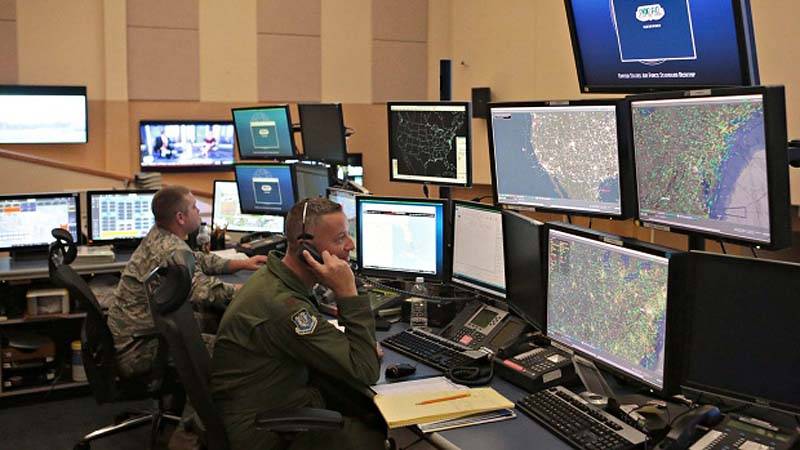
Article posted on the 02.05.2018 website of the year.
Integration of all the data provided by the sensors in a single base protection center, also equipped with operational management tools, is undoubtedly the best solution for protecting military bases
When a contingent of troops is deployed in a foreign country, a main operational base is created, which needs some form of protection, since military operations are conducted in a situation of, if not real threats, then at least with certain risks.
If the task requires controlling vast areas of territory, then patrols from the main operational base (GOB) are not enough, the military should have its own “boots on the ground” in key areas. Thus, advanced operational bases (PHB) are created, smaller than the main one, but, nevertheless, able to receive some number of military personnel, as a rule, not less reinforced company. The smallest (usually platoon levels) organized bases, known as fortified outposts or advanced guard posts, are organized in critical areas where constant military presence is necessary.
When the presence of military contingent is necessary
It is understood that in a hostile environment, all these bases must be protected. However, the meaning of this infrastructure lies in its ability to deploy patrols that could actively control the surrounding areas. On the other hand, if the threat level increases, then an increasing number of personnel is needed to protect the base itself, which increases its static level, which ultimately makes the presence of soldiers almost useless, since the base becomes a self-defeating unit that does not project any - or their capabilities in the surrounding area. Balancing between stationary defense and the ability to project active operations on the ground is the task of the commanders. However, the widespread use of sensors and weapons systems in order to optimize protection capabilities makes it possible to allocate the maximum number of personnel for performing active operations, which in turn makes it possible, as a rule, to reduce the level of direct threat to the base itself.
If the outposts, as a rule, have too small a number for organizing a structured defense, for which a wide range of technologies are really involved, HEPS and FARS can rely on systems of various types to increase the level of protection. At the same time, the number of personnel required to ensure adequate defensive capabilities is reduced, the risks for the units are minimized and their combat effectiveness is increased.
The choice of the place where the GPB or PHB will be built. depends on many factors and, as a rule, the defensive aspect is among the highest priorities. However, sometimes other considerations, often related to the relationship with the local population, can lead to the choice of a place where the surrounding terrain provides shelter to a potential opponent, allowing him to approach the base at a range of rifle fire. weapons. During the recent operations, in many cases, the military were forced to build their POPS in human settlements, and this is one of the most risky situations from the point of view of defense.
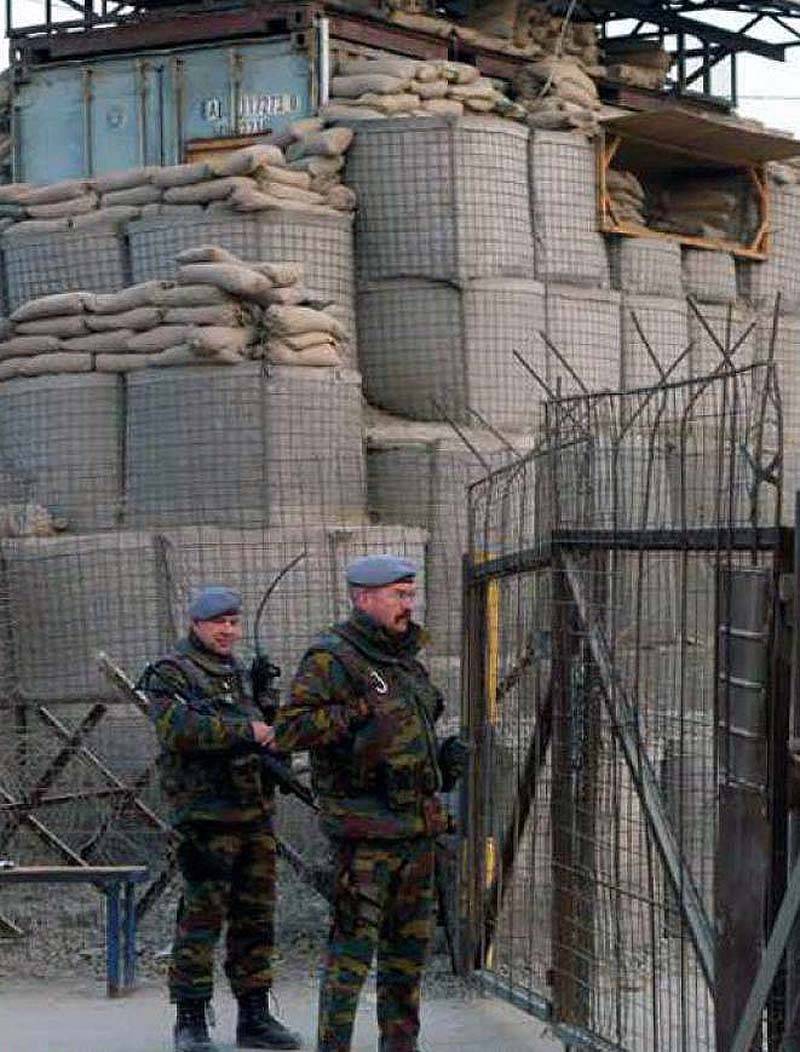
At one of the entrances to the airport of Kabul. A hangar assembled from containers, sideways cover gabions filled with soil.
Organizing the right forward operational base
The bases organized in open spaces, as a rule, have good visibility of the adjacent territory, which allows to determine in advance the signs of an impending attack by even the most non-technological sensor — the naked eye, while more advanced sensors with their maximum ranges make it possible to prepare much better for its reflection. Despite this, the risk of using missiles, artillery and mortar weapons remains. Relationships with the local population are another element of risk. In most missions, one of the tasks of which is to build and / or strengthen state institutions, interaction with the military and police forces of the receiving side is necessary, and often they are involved in cooperation to protect the bases. In addition, the need to reduce the number of soldiers engaged in daily logistical tasks, as well as stimulate the local economy, often contributes to attracting local labor. Local residents, both military and civilian, increase the risks, since in this case the potential threat is already in the camp. Obviously, even for personnel not involved in the tasks of reconnaissance and security, the risks remain, and to minimize them, not only a thorough threat assessment, appropriate methods and training, good intelligence, but also integrated systems are needed, which allow to increase the level of situational awareness and protection so that the base’s defense control point can neutralize any possible threat as quickly as possible.
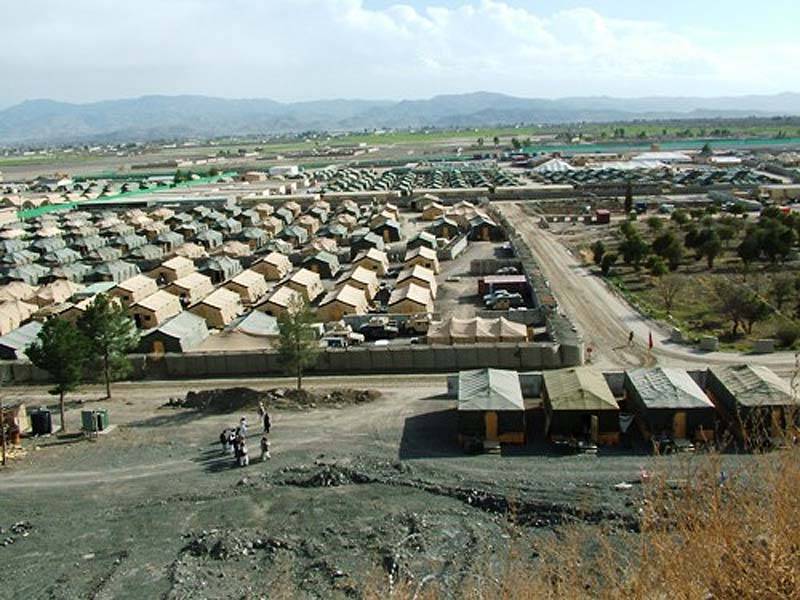
View of the military base in Afghanistan; Protecting these structures is often not an easy task and requires the integration of sensors and actuators.
When organizing a base, perimeter protection is a priority. After a site has been selected, as a rule, engineering units assume responsibility for the deployment of a security fence around the base. A simple hedge often does not provide sufficient protection, thus more stable systems are needed that are able to withstand small arms, as well as some types of rocket grenades. One of the standard technologies is the use of enclosing elements of different types and sizes filled with soil, which makes it possible to quickly create protective barriers using earth-moving equipment. This is a much faster solution compared to sandbags, and playing with the filling material allows you to change the levels of protection.
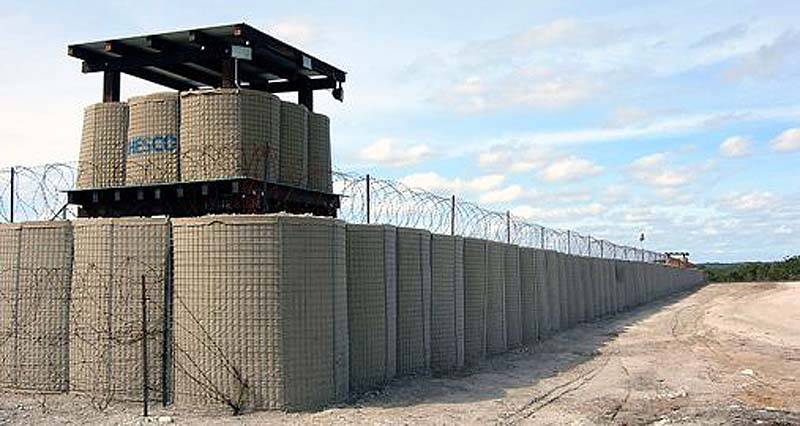
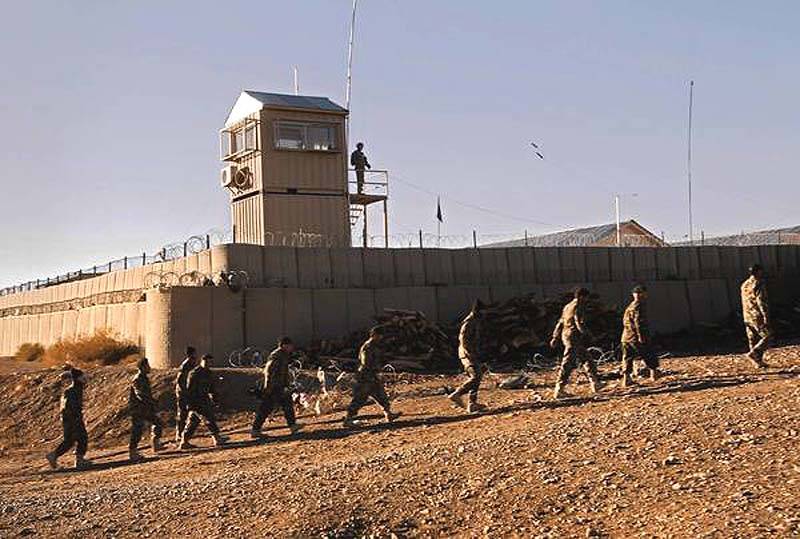
Barbed wire fence, internal wall of gabions filled with earth, metal security tower - the standard for today passive base perimeter protection
Essence of the question
Today, various solutions from a variety of companies are available on the market. Hesco Bastion is one of the key players in this area, producing systems of three different types. All of them are containers made of low-carbon steel wire mesh with vertical angular helix fasteners lined with non-woven polypropylene geotextile. First, the company began mass production of gabions of the MIL Unit series, which came in different sizes; the largest was MIL7, the height of the 2,21 meter, the cell of the size of 2,13x2,13 meter, and the total length of one module was 27,74 meter.
The next step was the production of gabions of the MIL Recoverable series, which have the same characteristics, but are distinguished by a single removable locking rod that allows you to open each section and pour the filler from the box. As a result, there are no problems with the transportation of structures. To disassemble the reinforcement, it is enough to pull out the locking rod and the sand is poured out. And the boxes and bags are folded and transported to a new place. (Standard MIL gabions are 12 times larger than folding MIL Recoverable). This reduces the logistic burden and the negative impact on the environment, as well as costs, since the systems can be reused. The RAID system (Rapid In-theater Deployment - rapid deployment to TVD) is based on MIL Recoverable gabions that fit into a specially designed and manufactured ISO container, which allows you to quickly deploy pre-connected modules up to 333 meters in length.
Shelter from mortar fire built of reinforced concrete and additionally reinforced with gabions produced by Hesco Bastion. As seen in the photo, gabions come in different sizes.
According to Hesco, using a RAID system reduces the number of vehicles involved in the delivery of protective barriers by 50%. DefenCell also offers a similar DefenCell MAC system, which uses Maccaferri's gabion know-how and the DefenCell geotextile know-how. The modules of this system are made of galvanized wire mesh panels connected by angular spirals and covered with ultraviolet-resistant ultrastrong geotextile. The MAC7 module has similar dimensions to MIL7, you need 180 m3 inert material to fill it. DefenCell also supplies non-metallic systems that reduce the risk of secondary fragmentation and rebound, depending on the filler material; according to the company, the system has demonstrated the ability to withstand 25 caliber shells. Such solid-textile solutions can significantly reduce the weight at the deployment stage, on average, metal mesh systems weigh five times and some even 10 times.
All of these systems can also be used for other defensive tasks inside the camp. Frontal FOBs, as a rule, require protection of the upper hemisphere, tanks filled with soil are installed on the roof of residential container modules, often as much as they can withstand. In larger camps, where the level of threats is less, they can be used to provide some kind of secondary protection from splinters around residential areas and to create anti-mine shelters, since it is impossible to protect all residential neighborhoods. They can also be used to protect sensitive areas and equipment with weapons, for example, command posts, ammunition depots, fuel depots, etc.

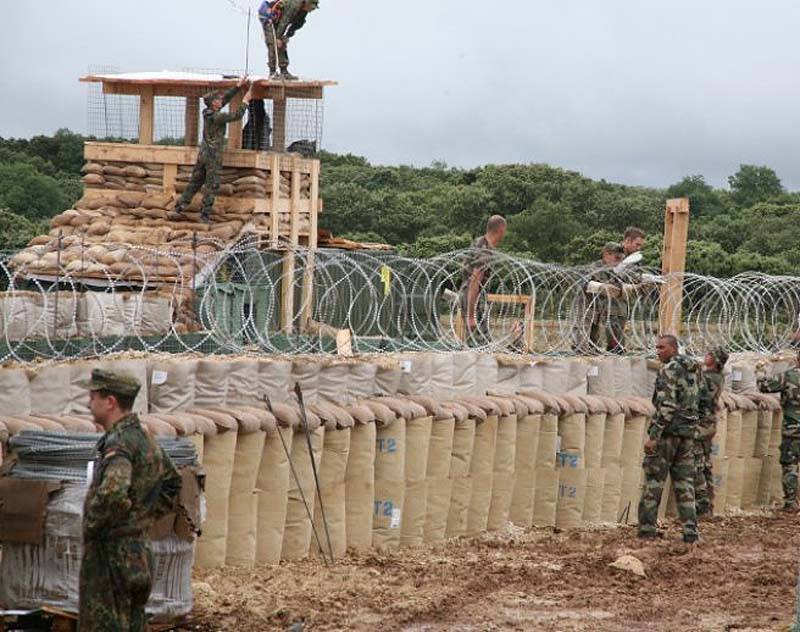
DefenceCell offers a ground-filled system based entirely on textile. It is lighter than gabions and eliminates ricocheting.
The ability to stack two or more levels of gabions allows not only to increase the height of the protective perimeter, but also to build watchtowers used by personnel on guard to monitor the surrounding terrain and the subsequent reaction to threats. Gabions can also be used to protect base crossing points in order to prevent vehicles from approaching them at high speed. In order to further enhance the protection of entry points, various companies manufacture moving barriers that can be activated immediately if a threat occurs.
Early detection of any possible threat can significantly increase the level of protection, since it makes it possible to take coordinated actions with the use of appropriate executive means and at the same time give time to personnel not participating in active defense to take shelter. If some areas of the area adjacent to the base allow opponents to come close to it unnoticed, then unattended automatic sensors can be deployed along the intended approaches for warning.
The passive infrared sensor is part of an unattended Flexnet sensor system developed by the Swedish company Exensor (currently part of Bertin)
Stationary defense improvement
In Europe, one of the key players is the Swedish Exensor, which in the summer of 2017 was acquired by the French Bertin. Its Flexnet system includes a set of optical, infrared, acoustic, magnetic and seismic unattended terrestrial sensors with minimal power consumption, all of which are combined into a single network. Each sensor contributes to the formation of a silent, self-repairing mesh network with optimized power consumption, the operation time of which can be up to one year, all data is transferred to the operational control center. Leonardo offers a similar UGS System kit, based on a set of maintenance-free ground sensors that can detect movement and other activity. The system dynamically creates and maintains a wireless mesh network capable of transmitting information and data to remote operational centers.
When only early warning is sufficient, only seismic systems can be used. The US military is currently deploying a consumable, maintenance-free E-UGS (Expendable Unattended Ground Sensor) ground sensor. These seismic sensors the size of a coffee cup can be installed in a few seconds and work up to six months, their algorithm allows you to determine only the steps of a person and moving vehicles. Information arrives on a laptop computer, on the screen of which a map with installed sensors is displayed, when the sensor is triggered, the color of its icon changes and a beep sounds. The E-UGS sensor was developed by Applied Research Associates, and over 40000 of such devices were delivered to the troops. Many companies have also developed similar multipurpose systems, as they can be used in border surveillance, infrastructure protection, etc. As already mentioned, in the protection of bases they are used as a “trigger mechanism”, warning of movement in some areas.
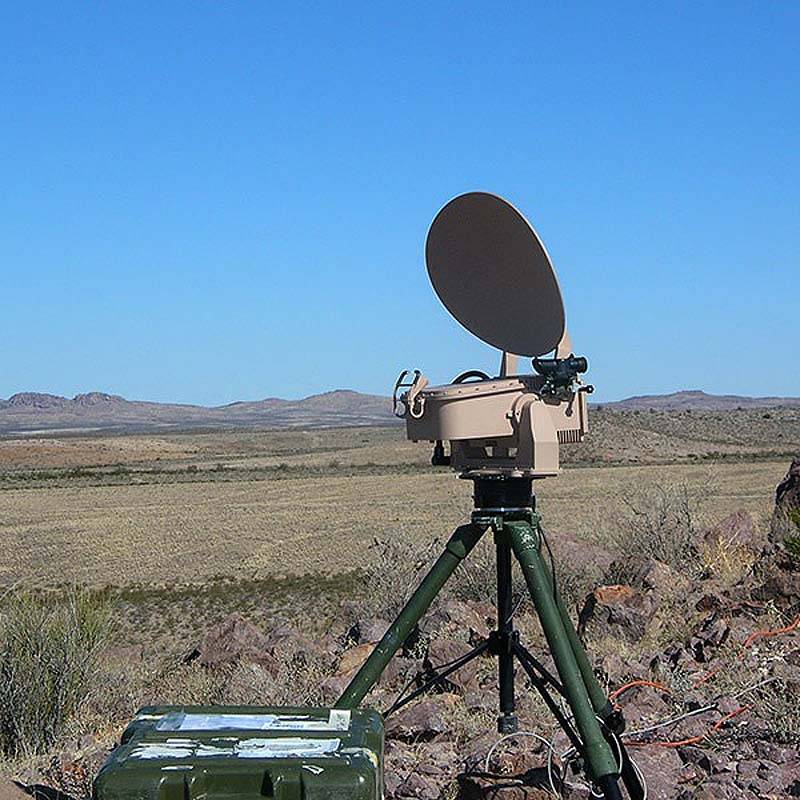
Typical surveillance radar. Systems of this type are part of the basic sensor set of most operational bases.
However, the main sensors, as a rule, are radars and opto-electronic devices. Radars can perform different tasks, but most often this observation is around the base, since survey radars have the ability to detect objects that are stationary and moving at a certain distance, including humans and vehicles. To confirm the objectives of the radar and positive identification, which is necessary before any kinetic effect, optical-electronic systems are used, usually with two channels, day and night. The night channel is based either on an electro-optical converter or on a thermal imaging matrix; in some systems both technologies are integrated. However, radar can perform another task - to determine the fire by indirect aiming, for example, attacking mortar mines and unguided rockets. Artillery has not yet appeared in the rebel arsenals, but nothing prevents them from mastering this science in the future. Depending on the size and geometry of the radar and optical-electronic sensors can be installed on high-rise buildings, towers, or even on airships. If necessary, if a full circular coverage is not provided, then complex systems with a different set of sensors can be installed.
The Thales Squire is well-deserved recognition in the area of 1-degree radar. Low CW interception radar with a maximum transmit power of 3 watt operates in the I/J band (10-10 GHz/20-9 GHz) and can detect a pedestrian at a distance of 19 km, a small vehicle at 23 km and a tank at 3 km . At a distance of 5 km, the accuracy is less than 5 meters, and in azimuth less than 0,28 mils (18 degrees). The Squire portable radar system weighs 4 kg, while the operator's control unit weighs XNUMX kg, which allows it to be used also at small FOBs and combat posts. The Squire radar is also capable of detecting aircraft at low altitudes and Dronesflying at speeds up to 300 km/h. An upgraded version has recently been introduced providing ranges of 11, 22 and 33 km for the above types of targets and with additional infrared capabilities. It also features a scan speed of 28 degrees/s, the previous version has a scan speed of 7 degrees/s and 14 degrees/s. In addition, for continuous operation for 24 hours, instead of three batteries, only two batteries are required, although this, as a rule, does not affect stationary operation in FOB and GOB. The Thales portfolio also includes the Ground Observer 80 and 20 models with human detection ranges of more than 24 km and 8 km, respectively.
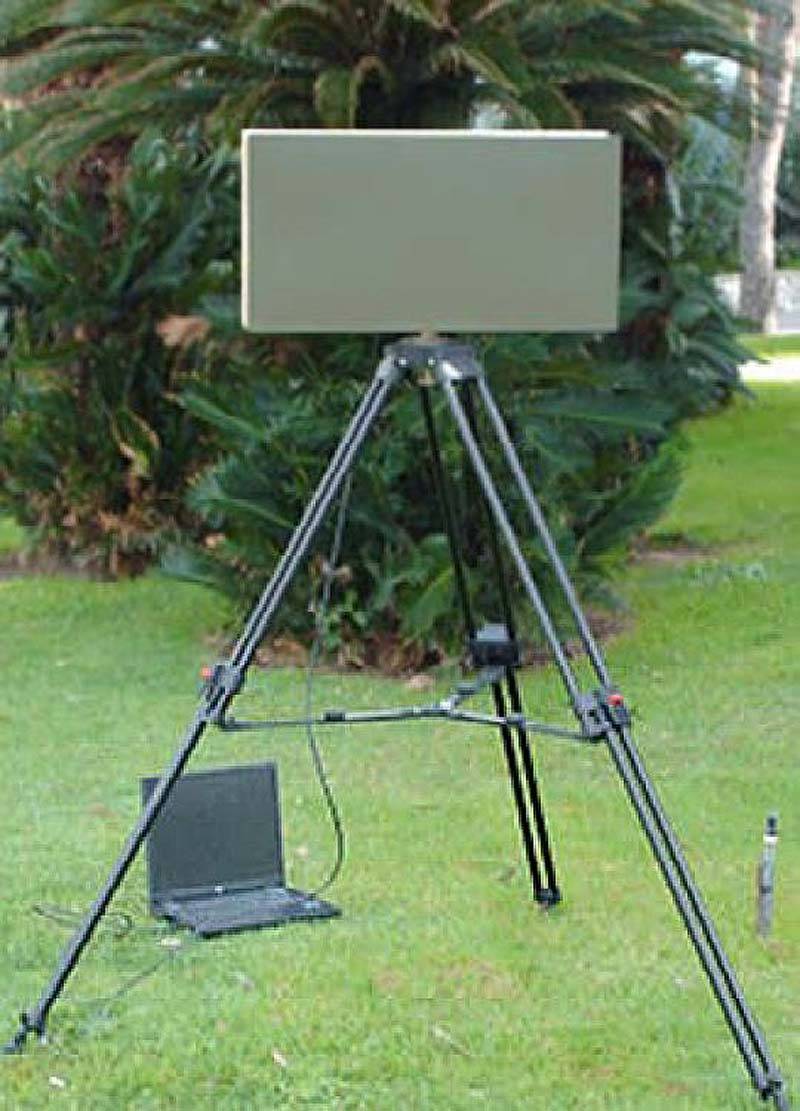
The Italian company Leonardo has developed a family of radars Lyra, used to monitor objects on the coast and in its depth. Pictured is a Lyra 10 radar, usually used to monitor ground targets.
Leonardo is mainly engaged in the production of small mobile radars and offers the military its Lyra family, the younger member of which is the Lyra 10 model. The number indicates the range for determining a person, small vehicles are detected at a distance of 15 km, and large ones at 24 km. Coherent pulse-Doppler X-band radar can detect helicopters and drones at a distance of 20 km.
The German company Hensoldt, a developer and manufacturer of sensor systems, has a Spexer 2000 radar in its portfolio. X-band pulse Doppler radar with AFAR technology (active phased array antenna) with electronic scanning of 120 degrees and optional circular rotation from a mechanical drive can detect a person at a distance of 18 km, light vehicles on 22 km and mini drones on 9 km. For its part, the Israeli company Rada offers three-coordinate perimeter radar systems capable of detecting, classifying and tracking on foot people, vehicles, as well as slow-flying small-sized manned and unmanned vehicles. Universal pulse-Doppler programmable radar pMHR, eMHR and ieMHR with AFAR, operating in the S-band, provide increased detection range of people and machines, respectively 10 and 20 km, 16 and 32 km, and 20 and 40 km, each antenna covers the 90 sector ° .
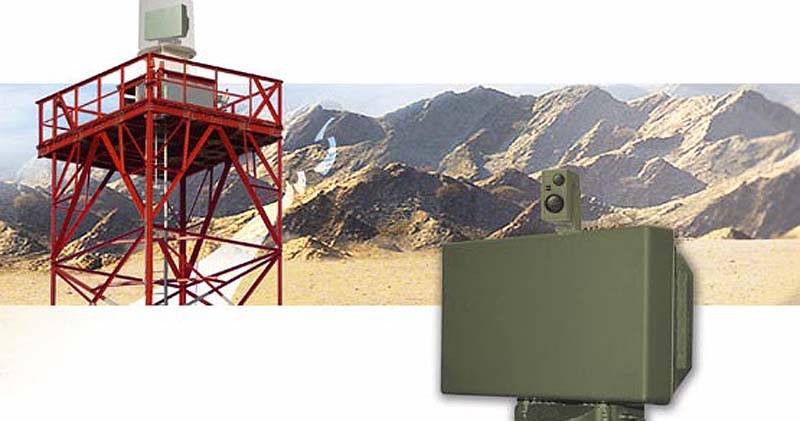
The German company Hensoldt developed the Spexer family of radars. Pictured is the Spexer 2000 model used for ground surveillance.
The Israeli company Rada offers to protect the bases of its universal hemispherical radars Muiti-mission Hemispheric Radar. Each radar covers the 90 ° sector, i.e., an 4 system is required for a full range coverage.
Another Israeli company, IAI Elta, developed the ELM-2112 family of continuous-observation radar, six out of seven also for ground-based applications. Radars operate in the X- or C-band, detection ranges from 300 to 15000 meters for a moving person and to 30 km for a moving vehicle. Each stationary flat antenna array covers the 90 °, while the multipath technology allows for instant full coverage.
The British company Blighter has developed a B402 radar for continuous radiation with electronic scanning and frequency modulation, operating in the Ku-band. This radar can detect a person walking at a distance of 11 km, a moving vehicle at 20 km and a large vehicle at 25 km; The main radar closes the 90 ° sector, each auxiliary unit closes another 90 °. The American company SRC Inc offers its Ku-band SR-Hawk pulse-Doppler radar providing 360 ° continuous coverage; its improved version (V) 2E guarantees the detection distance 12 km for one person, 21 km for small cars and 32 km for large vehicles. In this section, only some of the many survey radars that can be used to protect the GPG or PHB were presented.
A set of four Blighter B402 radars with M10S long-range antennas with beam scanning at elevation 10 °
B402 single radar from the company Blighter. The photo shows a radar combined with an optocoupler system. Its M20W antenna provides a beam angle in elevation angle 20 °. The radar is ideal for mobile deployment in mountainous terrain.
From radar to infrared and acoustic detectors
Although better known for its optocoupler systems, FLIR also developed the Ranger family of radars, ranging from the short-range radar R1 to the long-range version R10; number means the approximate human detection range. Undoubtedly, larger radars with a longer range may be used to protect the bases, but you should think about the cost of their operation. Specialized artillery radars are usually needed to detect attacking projectiles, while air defense system radars connected to special executive systems provide protection against unguided missiles, artillery shells and mines, but a complete description of these systems is beyond the scope of the article.
While radars provide detection of potential intruders, other sensors are useful in the event of an attack on a base; The mentioned specialized air defense radars of artillery and mortars fall into this category. However, several sensory systems were developed to determine the sources of direct fire. The French company Acoem Metravib developed the Pilar system, which uses sound waves generated by the source of a small-arms shot to localize it in real time and with good accuracy. In the case of database protection, it can include from 2 to 20 acoustic antennas interconnected. The azimuth, elevation and distance to the source of the shot, as well as the GPS grid are displayed on the computer. The system can cover an area of up to one and a half square kilometers. A similar system, known by the acronym ASLS (Acoustic Shooter Locating System - acoustic arrow localization system), was developed by the German company Rheinmetall.
The Metravib Pilar sensor system is installed at the top of the buildings. The system can be combined with several more systems to cover a large area around the base.
If the aforementioned systems are based on microphones, the Dutch company Microflown Avisa has developed its AMMS system based on the registration technology of the acoustic vector AVS (Acoustic Vector Sensor). AVS technology can not only measure sound pressure (a typical measurement made by microphones), but also gives the acoustic velocity of the particles. The single sensor is based on the Mems technology (microelectromechanical systems) and measures the air velocity through two tiny platinum resistive strips heating to 200 ° C. With the passage of air flow through the plates, the first wire is slightly cooled and due to heat transfer, the air receives a certain part of it. Consequently, the second wire is cooled by the already heated air and. thus, it cools less compared to the first wire. The temperature difference in the wires changes their electrical resistance. There is a voltage difference proportional to the acoustic velocity, and the effect is directional: when turning the air flow, the area of the temperature difference also rotates. In the case of a sound wave, the air flow through the plates changes in accordance with the waveform and this leads to a corresponding change in voltage. Thus, a very compact (5x5x5 mm) AVS sensor weighing several grams can be manufactured: the sound pressure sensor itself and three orthogonal Microflown sensors at one point.
The AMMS (Acoustic Multi-Mission Sensor) device has a diameter of 265 mm, a height of 100 mm and a mass of 1,75 kg; it can detect a shot fired from a distance of 1500 meters depending on the caliber with an error in the range of 200 meters, ensuring accuracy less than 1,5 ° in direction and 5-10% in range. AMMS underlies the base protection system, which is based on five sensors and can detect small arms fire up to 1 km and indirect fire up to 6 km from any direction; Depending on the terrain and placement of range sensors, there may be more typical.
The Italian company IDS has developed a radar to detect enemy fire, ranging from 5,56-mm bullets and ending with rocket-propelled grenades. The HFL-CS (Hostile Fire Locator - Counter Sniper) radar with 120 ° coverage operates in the X-band, so three such radars are needed for the full coverage. The radar when tracking the source of fire measures the radial velocity, azimuth, elevation and range. Another specialist in this field, the American company Raytheon BBN, has developed the third version of its system for determining the Boomerang shot, based on microphones. It was widely used in Afghanistan, however, like most of the systems already mentioned, which took part in many military operations in Western European countries.
Raytheon BBN sold the Boomerang system to the US military. In the photo, the Boomerang III device is the newest version of the microphone-based shooter localization system.
Optronic look
As for the optical-electronic sensors, the choice here is huge. Optical-electronic sensors, in fact, can be of two types. Sensors for observation, as a rule, have a circular coating with the ability to track changes in the pixel pattern, after which a warning is issued, and longer range systems with a limited field of view, in most cases used for positive identification of targets detected by other sensors - radar, acoustic, seismic or optronic. The French company HGH Systemes Infrarouges offers its family of round-vision Spynel systems based on thermal imaging arrays. It includes sensors of various types, such as uncooled models, Spynel-U and Spynel-M, as well as cooled ones, Spynel-X, Spynel-S and Spynel-C. Models S and X operate in the mid-wave region of the IR spectrum. and the rest in the long-wave region of the IR spectrum; device sizes and scanning speeds vary from model to model, as well as human detection distances, starting with 700 meters and ending with 8 km. The French company adds to its sensors Cyclope software for automatic detection of intrusion and tracking, capable of analyzing high-resolution images captured by Spynel sensors.
In September 2017, the company HGH added an optional laser rangefinder to the Spynel-S and -X devices, which makes it possible not only to determine the azimuth, but also the exact distance to the object, respectively, allowing target designation. As for the optical-electronic devices of a larger range, they are usually installed on the panoramic head and are often connected to sensors for all-round visibility. Thales Margot 8000 is one example of such devices. A thermal imager operating in the mid-IR region of the spectrum and a day-time camera, both of them with a continuous increase, as well as a laser rangefinder with a range of 20 km, are installed on the panoramic head gyrostabilized in two planes. As a result, the Thales Margot8000 system is able to detect a person at a distance of 15 km.
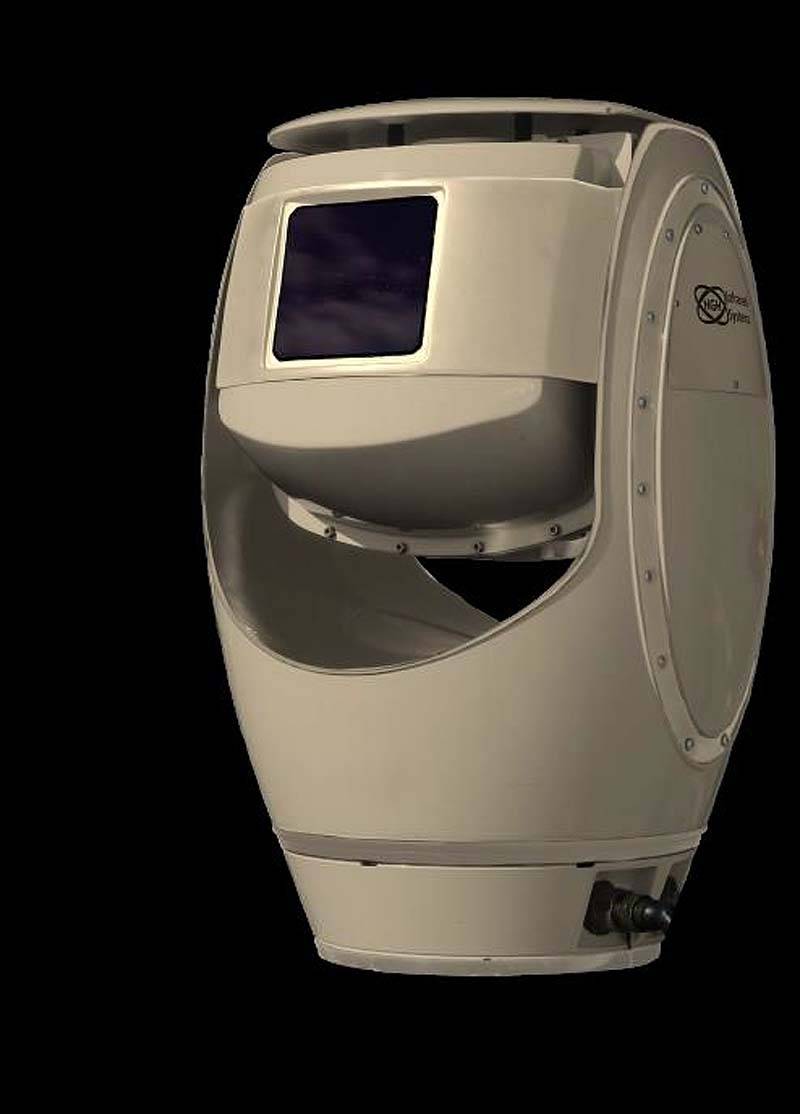
The latest Spynel-S circular surveillance system developed by the French company HGH Systemes Infrarouges is equipped with a laser rangefinder
Device Z: Sparrowhawk from the company Hensoldt is based on an uncooled thermal imager with fixed or magnifying optics, a daytime camera with an x30 optical zoom mounted on a turntable. The detection range of a person with a thermal imager is 4-5 km, and 7 km vehicles. Leonardo offers its Horizon mid-wave thermal imager using the latest matrix technology in the focal plane in order to meet the requirements of long-range observation. Sensors and continuous optical magnification of 80-960 mm ensure detection of a person at a distance of more than 30 km and a vehicle of almost 50 km.
Israeli company ESC BAZ manufactures long-range, round-the-clock surveillance systems that can be synchronized with other sensors to provide positive identification.
The Israeli company Elbit System has developed several products to ensure the safety of important infrastructure, which can also be used to protect POB and HEB. For example, the LOROS (Long Range Reconnaissance and Observation System) system consists of a daytime color camera, a daytime black and white camera, a thermal imaging camera, a laser range finder, a laser pointer, and a control and monitoring unit. Another Israeli company, ESC BAZ, also offers several systems for similar tasks. For example, its Aviv short-range and medium-range surveillance system is equipped with an uncooled thermal imager and a super sensitive Tamar surveillance camera with a wide-field color channel, a visible spectrum channel with a narrow field of view and a mid-IR channel, all with continuous optical magnification x XXUM.
The American company FLIR, which also produces radars, offers integrated solutions. For example, the CommandSpace Cerberus, a trailer-mounted system with a 5,8 meter-high mast, on which you can attach various radar stations and optoelectronic systems, or a Kraken kit mounted in a van. designed to protect POB and advanced security posts, which also includes remotely controlled weapons modules. As for the optical-electronic systems, here the company offers a line of Ranger devices: cooled or uncooled thermal imagers of different ranges, or CCD cameras for low light with lenses with high magnification.
40-mm automatic grenade launcher mounted on top of a wall of Hesco Bastion; these weapons along with 12,7-mm machine guns are typical defensive systems used to protect military bases
Back to arms
As a rule, bases are protected by soldiers with personal weapons and weapons systems, including 12,7-mm machine guns, 40-mm automatic grenade launchers, large-caliber grenade launchers and, finally, anti-tank missiles, and small, medium and large mortar guns are used as indirect weapons. calibers. Some companies, such as Kongsberg, offer remotely controlled weapons modules that are embedded in containers or mounted on the parapets. The purpose of such decisions is to reduce the need for human resources and not to expose soldiers to enemy fire; however, at the moment they are not so popular. For large bases, that is, those that have a runway, the idea of patrolling a large perimeter with ground robotic complexes, including armed ones, is considered. Anti-UAV systems must also be added to defense systems, as some groups use them as flying IEDs.
To protect military targets, mortars are used for indirect fire; mortars are often used at night, firing lighting mines
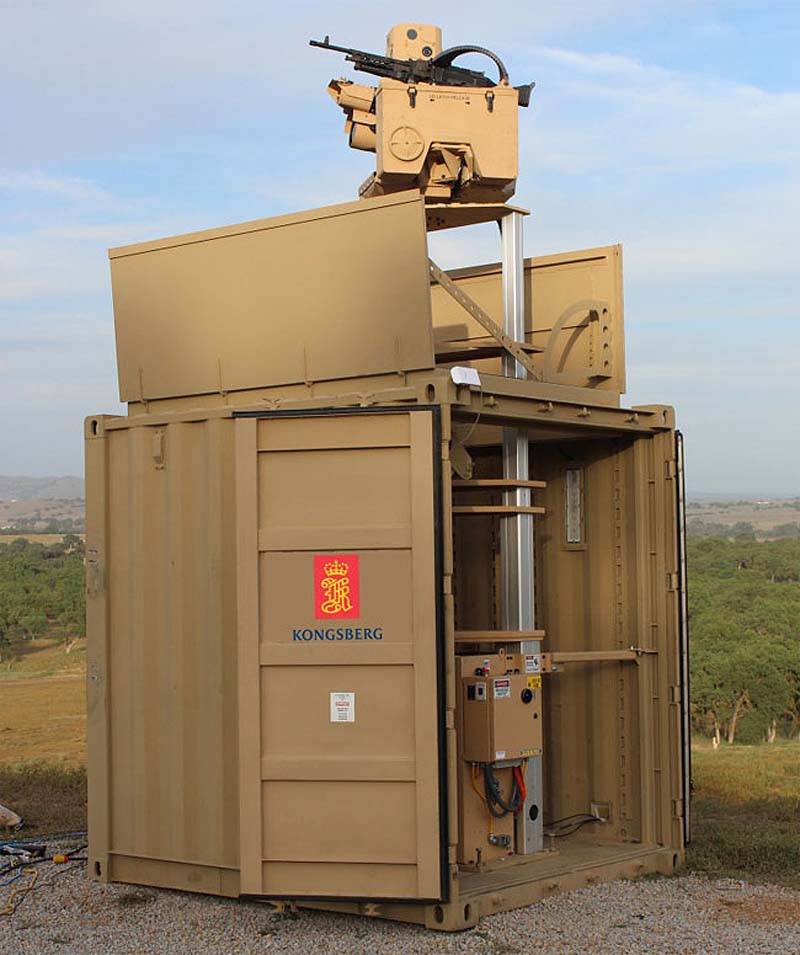
A few years ago, the Norwegian company Kongsberg offered a container version of its remotely controlled weapon module
However, the key problem for all the above systems is integration. The goal is to link all sensors and actuators with the base center of defensive operations, where the personnel responsible for protecting the base can assess the situation in almost real time and take appropriate action. Other sensors, such as mini-UAVs, can also be integrated into a similar system, while information and images from other sources can be used to fill an operational picture. Many key players have already developed such solutions, and some of them have been deployed in the army. Interaction between countries is another key issue. The European Defense Agency launched a three-year project on the future interoperability of FICAPS database protection systems (Future Interoperability of Camp Protection Systems). France and Germany agreed on common standards for interaction in existing and prospective base protection systems; The work done will form the basis of the future European standard.
Materials used:
www.shephardmedia.com
www.hesco.com
www.defencell.com
bertin-technologies.com
www.thalesgroup.com
www.leonardocompany.com
www.hensoldt.net
www.rada.com
www.blighter.com
www.flir.com
metravib.acoemgroup.com
microflown-avisa.com
www.raytheon.com
www.hgh.fr
www.escbaz.com
www.eda.europa.eu
www.pinterest.com
www.wikipedia.org
en.wikipedia.org
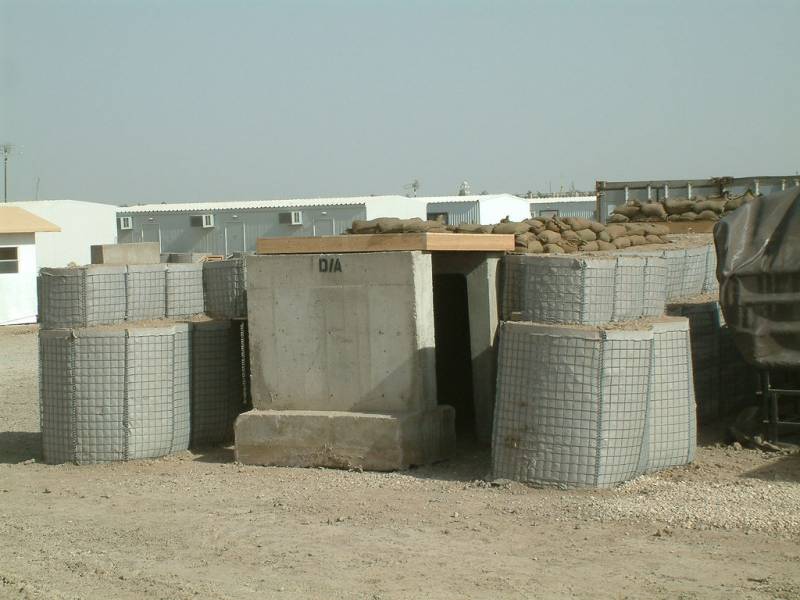
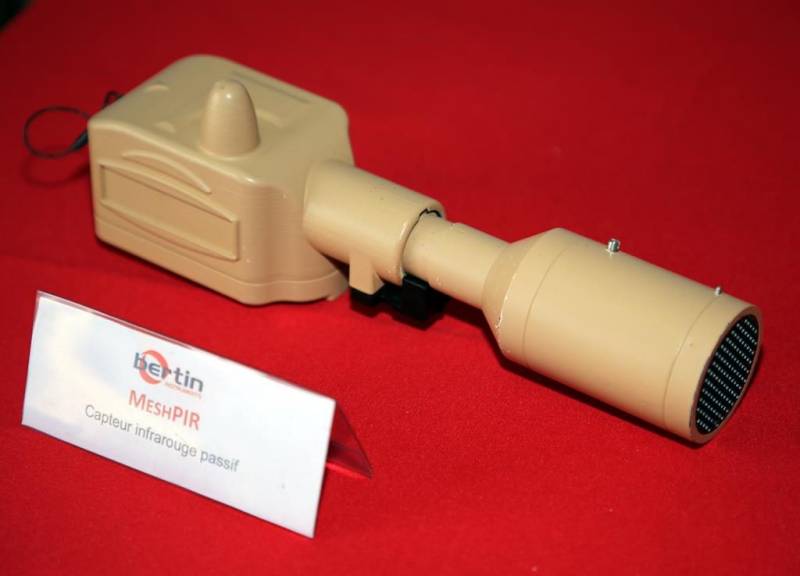
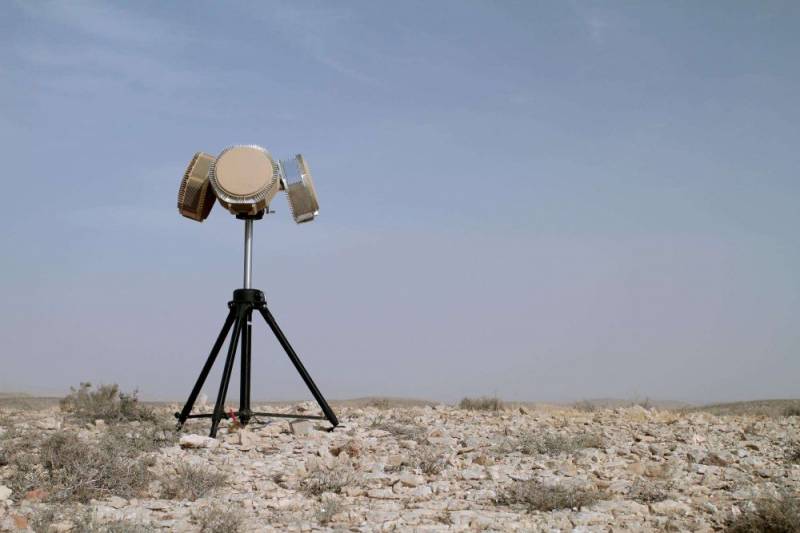
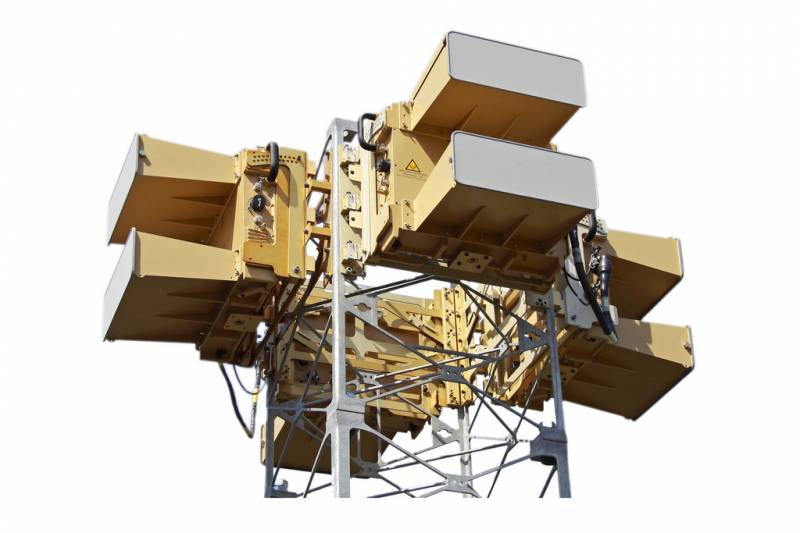
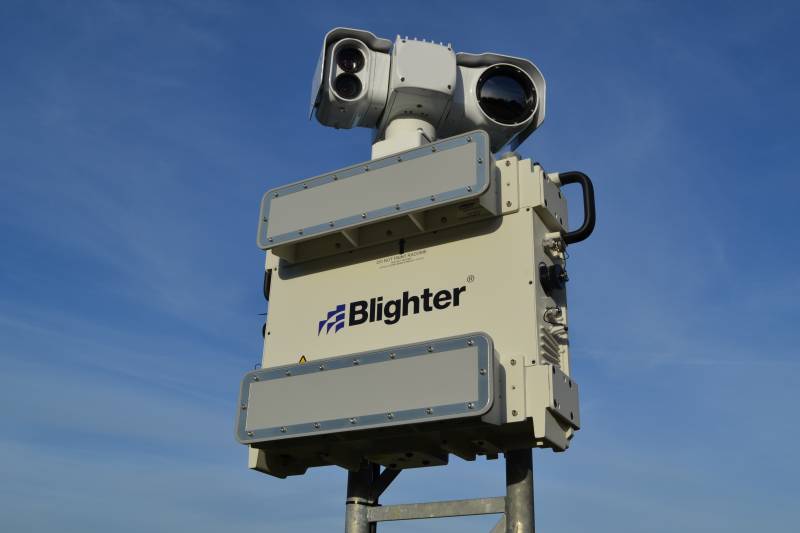
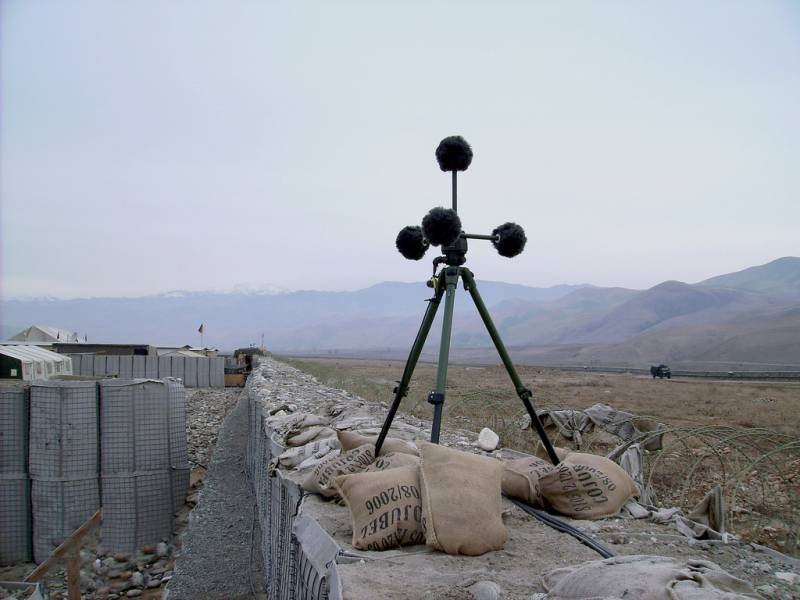
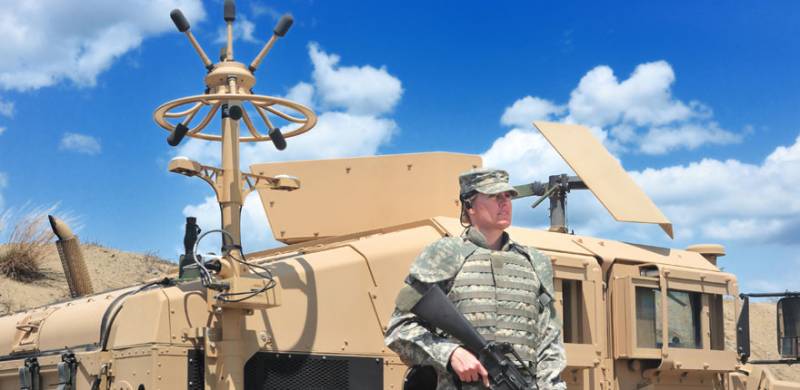
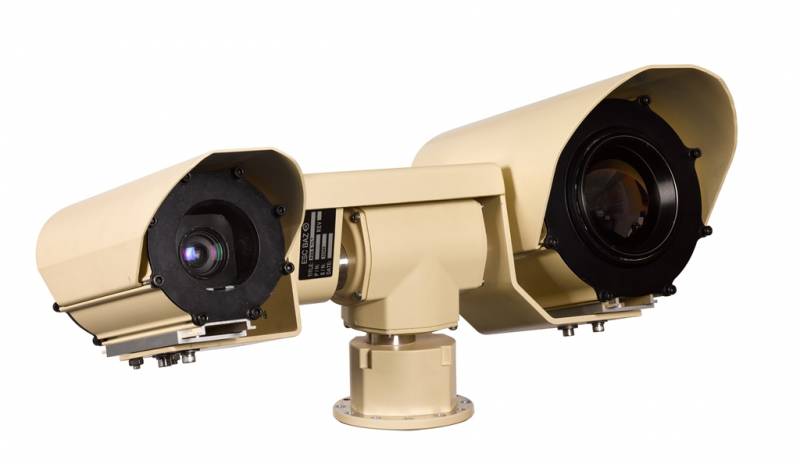
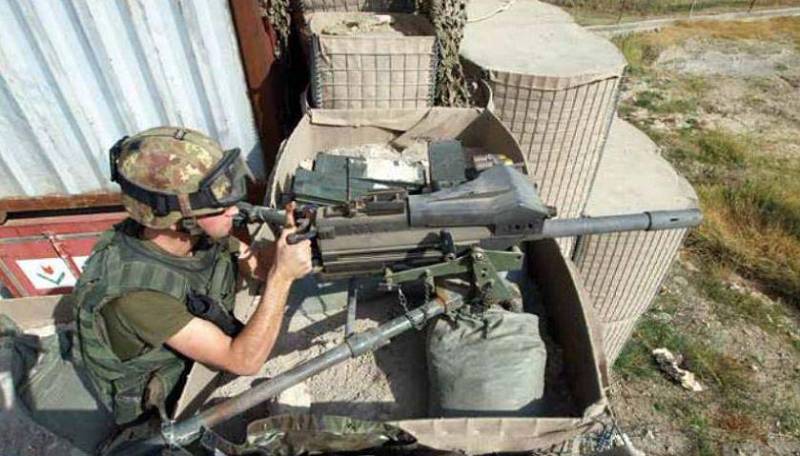
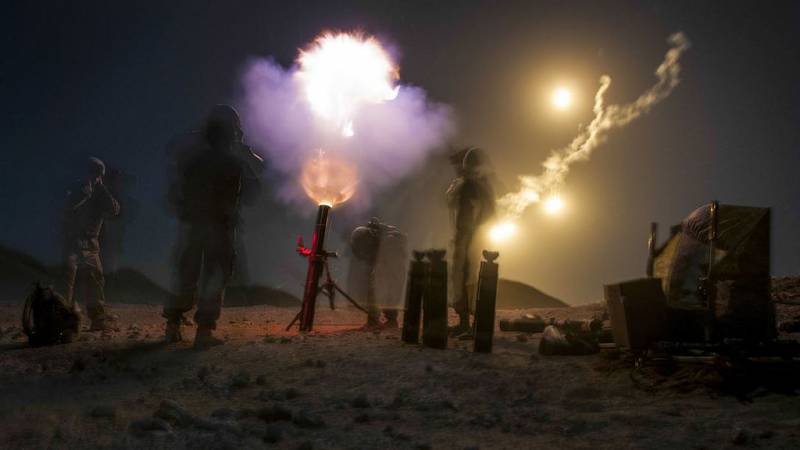
Information